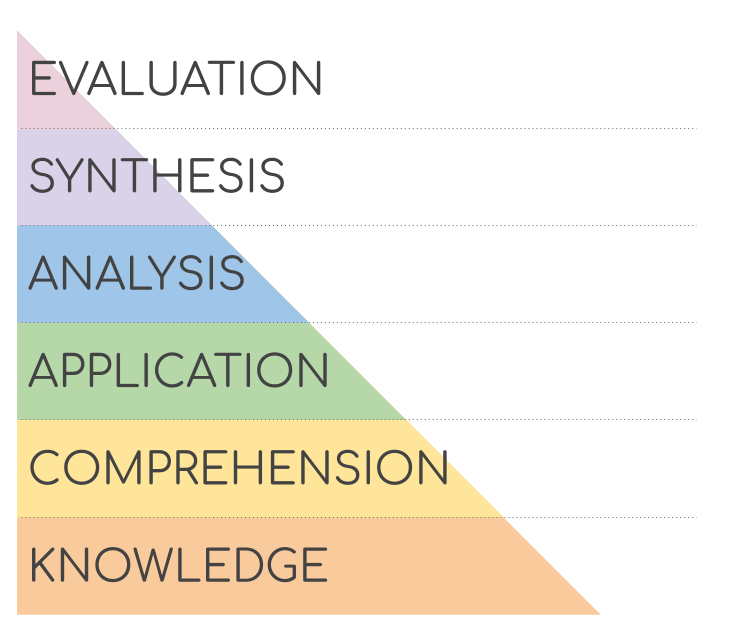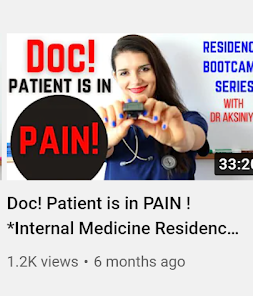Daniel Wasser, medical writer and content developer on Kolabtree, provides tips on how to make educational videos for medical studies.
“Technology in education is NOT the end goal. Enabling learning everywhere is the goal.”
– Andrew Barras
In today’s modern world, there is an increasing need to deliver high-quality educational content in informative and impactful formats to learners. Those learners may run the gamut from patients, to medical students, to healthcare professionals, such as doctors, nurses, and allied health providers. Organizations looking to deliver this content, whether teaching universities, private medical practices, or global pharmaceutical companies, all have the same problem: attention span. Video content when designed properly can help bridge this gap and help to ensure learners receive the content that you are looking to deliver in an easily digestible and engaging format.
Structure of a medical education video
What am I trying to teach about?
The first challenge when designing a medical education video of any type is to identify your learning objective. Are you looking to teach gross anatomy to medical students, looking to grow your medical practice by informing patients about a new procedure, or market how a novel immunotherapy agent works to experienced oncologists attending a medical conference? After you have identified what message you would like to deliver, then it is critical to also ask what you are asking the learner to do with this information. This decision making can be guided by adult instructional design principles. As shown in the figure, Bloom’s Taxonomy is a helpful framework that divides educational learning objectives into levels of complexity and specificity.

Bloom’s Taxonomy
Most medical education videos will function in the lower four instructional domains. Diverse examples from medical education and healthcare marketing would consist of:
Knowledge – A short social media video on pain medicine for the USMLE board exams
Comprehension – A high-quality 3D animation for physicians explaining how a new pharmaceutical agent works (example here, courtesy of Photon Biomedical)
Application – A brief 2D animation on the origin and treatment of malaria for patients
Analysis– An expert roundtable discussing the latest cancer research from a major medical conference and its clinical relevance for community oncologists:
In order to deliver your content at the proper instructional domain level it is critical to target your content to both the right educational level as well as to identify an appropriate voice and format for your intended audience. This is important as some learner groups, for example patients versus doctors, might seek to gain information from different sources and react differently to who is providing the information. Specialist audiences, such as nurses or physicians, generally look to gain information from medical societies or other sources developed and reviewed by their peers. This is important to consider when designing video content as including key opinion leaders, published authors and other experts in a specific medical space can help to enrich your content while helping to build trust with your learner audience.
Who is my audience? Tips to maximize engagement
Keep it short
When designing medical education videos to maximize learner engagement there is one over-arching principle that I tell my clients: keep it short! Research has been conducted on the length of time that university students watch streaming educational videos for their classes, analyzing results from almost 7 million video-watching sessions over the course of an academic year. These researchers identified that even in a highly motivated “captured” population such as university students the median engagement time for instructional videos is less than 6 minutes long. As videos grew longer, student engagement plummeted, so much that the median engagement time with 9- to 12-minute videos was about half and less than 20 percent of students would watch videos longer than 12 minutes in full. It is important to keep this research in mind when designing medical education videos in mind for any purpose, especially when targeting “less motivated” audiences for which there will be no final exam at the end of the semester, such as patients or healthcare professionals. Medical education videos need to be designed with the assumption that viewers have a variety of ways to spend their time and that the video content needs to be worth the investment of their attention during their busy day.
Personalize the content
Another key element when building medical educational videos is to personalize the content to your target audience. The use of conversational rather than formal language has been shown to have a significant impact on learner engagement and retention as it helps to put the learner at ease and build a connection between the narrator and the learner. Furthermore, the rate at which a narrator speaks and the formality of their speech can significantly impact both how the learner views the authoritativeness of the content as well how much they retain of the video’s overall content. Lastly, the medical education video should acknowledge the context in which it will be viewed. Is the learner watching this as part of at-home university study, a presentation at a medical conference booth, or as part of a speaker dinner for a pharmaceutical company? Recognizing this dynamic when building out a script can help to make sure it hits the mark in both tone, length and messaging so that the video is as impactful as possible. Furthermore, this information can have a significant impact on the overall cost and effort investment in building a medical education video. It is also useful to consider where the learner will be when consuming the content: In the privacy of their home with plenty of time to concentrate; in the company of a pharmaceutical sales representative who can answer their questions; or on the floor of a major medical conference call surrounded by hundreds of people. All these factors influence how a medical education is scripted and how content is designed to achieve the overall learning objective of the video.
Applications of medical education videos
One of the most exciting and impactful features of medical education videos is that they complement the increasingly mobile educational landscape around the world. Almost everyone today has an internet-connected mobile phone in their pocket which allows them to access video content on-demand. This is a significant change from even a few years ago when high-quality medical education was limited to in-person lecture halls or access to expensive academic textbooks or select medical conferences.
Medical education videos can serve as a way to help learners around the world access vital information as well as to be able to select what, where and when they will best be able to take in new information. In my personal experience, I have seen doctors around the world increasingly be able to track changes in clinical guidelines or ground-breaking academic research through the expanded use of medical education videos.
Medical education videos can also serve to increase the amount of high-quality content available to patients and caregivers and serve as a recognized medium that is accurate and authoritative in a media environment saturated with misinformation and inaccurate medical science. This is an important responsibility that educators and marketers should consider when designing content.
How can you deliver content to maximize engagement?
The third major area to consider when designing a medical education video is staging and visualization to maximize engagement. Videos can range across the spectrum from simple one camera shoots of a narrator or medical expert all the way up to complex 3D animations of how a novel medication works in the body. Naturally the choice of the type of video you are looking to produce should align to the instructional design objectives and domains we have identified above.
- Camera shoots of medical educators or key opinion leaders can help to deliver their expertise and authority to the educational topic or message you are looking to deliver and can be built relatively quickly once a script has been developed.
- Animation can also be employed in medical education videos and can be a valuable way to translate complex visual information to patients or healthcare providers.
- Animation can convey information about anything from visible body functions to microscopic pharmaceutical actions more simply than photographs or illustrations.
However, to convey that information effectively, animations require the development of scripted storyboards, voice talent and animators to help bring the animation to life in an effective and visually engaging manner (example below; courtesy of Photon Biomedical).
How can learners apply the content?
Another key point when building a medical education video is to consider how you would like users to apply the content that you are teaching them. Per adult instructional design principles discussed above, the application level of Bloom’s Taxonomy is where a learner moves beyond basic comprehension in order to begin to apply what they have learned to their day-to-day lives. Learners, whether medical students or physicians, are expected to use the new concepts or tools they have been exposed to in the video to new problems and situations. Potential examples might include:
- A student applying the educational content they watched to achieve better performance in medical school or a clinical board exam, such as the USMLE or MCAT
- A physician changing their prescribing behaviors to include a novel chemotherapy
- A patient asking their healthcare provider about a new treatment option for their elderly parent
- An insurance company expanding its coverage to include a recently developed procedure
All of these examples are reliant on the medical education video being clear and impactful, both from a scripting as well as visualization standpoint. This will allow the learner to take the content being delivered and to identify ways that they can apply the video to the challenges and opportunities they are facing in their lives. Medical educators or marketers should be sure to think through what their ultimate application end goal should be when designing content and making key decisions around format and delivery channel.
Key takeaways
In summary, there are three key areas that anyone interested in developing a medical education video should consider:
1) What am I trying to teach about?
2) Who is my audience? and
3) What is the learner supposed to do with this information?
These three questions can help guide everything from format, to script complexity, to decisions around live camera versus animation, as well as the delivery channel for the video. Channels such as video increasingly have the advantage over older mediums such as print or live lectures/speaking events as a way to reach the widest possible global audience with the most reasonable investment in time and resources. An information-rich medium such as video which combines audio and visual formats can be one of the most impactful channels to influence learners today.
Medical science educators or healthcare marketers interested in developing medical education videos should look to experienced medical education video partners who can help ensure that any script is well-supported scientifically, as well as from an audience engagement and instructional design perspective. These partners can help to ensure that educators or healthcare marketers are getting the greatest return on investment while maximizing the value that learners get from any video content they watch. In addition, recommendations can be made on how best to deliver this content to best reach their target audience. Looking ahead towards 2022, medical education videos are well positioned to continue to grow as an innovative channel to reach a diverse array of scientific educational needs across a wide spectrum of target audiences, from students to patients and physicians.
References
- Tackett, S, et al. (2017) Academic Medicine: August 2018 – Volume 93 – Issue 8 – p 1150-1156.
- Brame, C. J. (2016). Effective educational videos: Principles and guidelines for maximizing student learning from video content. CBE—Life Sciences Education, 15(4), es6.
- De Jong, T. (2010). Cognitive load theory, educational research, and instructional design: Some food for thought. Instructional science, 38(2), 105-134.
- Guo, P. J., Kim, J., & Rubin, R. (2014, March). How video production affects student engagement: an empirical study of MOOC videos. In Proceedings of the first ACM conference on Learning@ scale conference (pp. 41-50). ACM.
- Mayer, R. E. (2008). Applying the science of learning: Evidence-based principles for the design of multimedia instruction. American psychologist, 63(8), 760.
- Mayer, R. E., & Moreno, R. (2003). Nine ways to reduce cognitive load in multimedia learning. Educational psychologist, 38(1), 43-52.
Need help to create a medical education video? Contact medical content writers on Kolabtree to get the best subject-specific content from experts. View experts now>>






